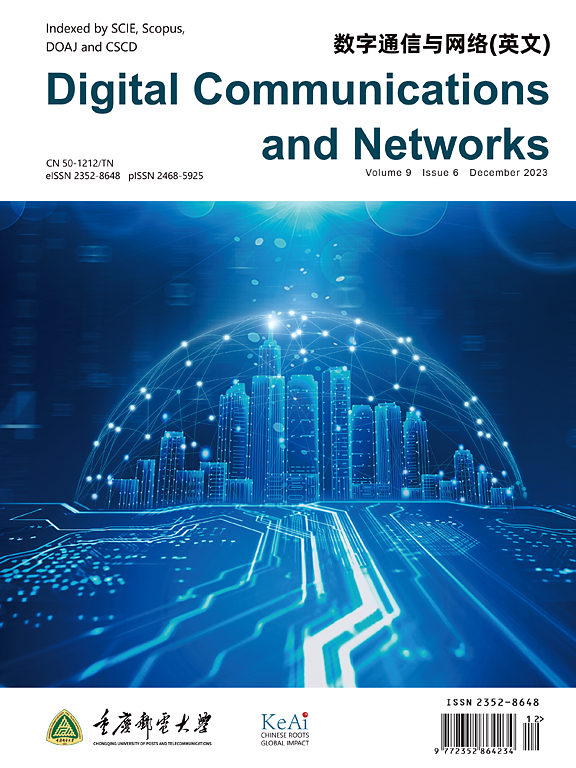Nondestructive detection and classification of impurities-containing seed cotton based on hyperspectral imaging and one-dimensional convolutional neural network
IF 7.5
2区 计算机科学
Q1 TELECOMMUNICATIONS
引用次数: 0
Abstract
The cleanliness of seed cotton plays a critical role in the pre-treatment of cotton textiles, and the removal of impurity during the harvesting process directly determines the quality and market value of cotton textiles. By fusing band combination optimization with deep learning, this study aims to achieve more efficient and accurate detection of film impurities in seed cotton on the production line. By applying hyperspectral imaging and a one-dimensional deep learning algorithm, we detect and classify impurities in seed cotton after harvest. The main categories detected include pure cotton, conveyor belt, film covering seed cotton, and film adhered to the conveyor belt. The proposed method achieves an impurity detection rate of 99.698%. To further ensure the feasibility and practical application potential of this strategy, we compare our results against existing mainstream methods. In addition, the model shows excellent recognition performance on pseudo-color images of real samples. With a processing time of 11.764 μs per pixel from experimental data, it shows a much improved speed requirement while maintaining the accuracy of real production lines. This strategy provides an accurate and efficient method for removing impurities during cotton processing.
基于高光谱成像和一维卷积神经网络的含杂质籽棉的无损检测与分类
籽棉的清洁度在棉织物的前处理中起着至关重要的作用,收获过程中杂质的去除直接决定了棉织物的质量和市场价值。本研究将波段组合优化与深度学习相融合,在生产线上实现更高效、准确的棉籽膜杂质检测。采用高光谱成像和一维深度学习算法,对棉籽收获后的杂质进行检测和分类。检测到的主要种类有纯棉、传送带、覆盖种棉的薄膜、粘附在传送带上的薄膜。该方法的杂质检出率为99.698%。为了进一步确保该策略的可行性和实际应用潜力,我们将结果与现有主流方法进行了比较。此外,该模型对真实样本的伪彩色图像也有很好的识别性能。实验数据的处理时间为11.764 μs / pixel,在保持实际生产线精度的同时,对速度的要求有了很大的提高。该方法为棉花加工过程中杂质的去除提供了一种准确、高效的方法。
本文章由计算机程序翻译,如有差异,请以英文原文为准。
求助全文
约1分钟内获得全文
求助全文
来源期刊

Digital Communications and Networks
Computer Science-Hardware and Architecture
CiteScore
12.80
自引率
5.10%
发文量
915
审稿时长
30 weeks
期刊介绍:
Digital Communications and Networks is a prestigious journal that emphasizes on communication systems and networks. We publish only top-notch original articles and authoritative reviews, which undergo rigorous peer-review. We are proud to announce that all our articles are fully Open Access and can be accessed on ScienceDirect. Our journal is recognized and indexed by eminent databases such as the Science Citation Index Expanded (SCIE) and Scopus.
In addition to regular articles, we may also consider exceptional conference papers that have been significantly expanded. Furthermore, we periodically release special issues that focus on specific aspects of the field.
In conclusion, Digital Communications and Networks is a leading journal that guarantees exceptional quality and accessibility for researchers and scholars in the field of communication systems and networks.
 求助内容:
求助内容: 应助结果提醒方式:
应助结果提醒方式:


